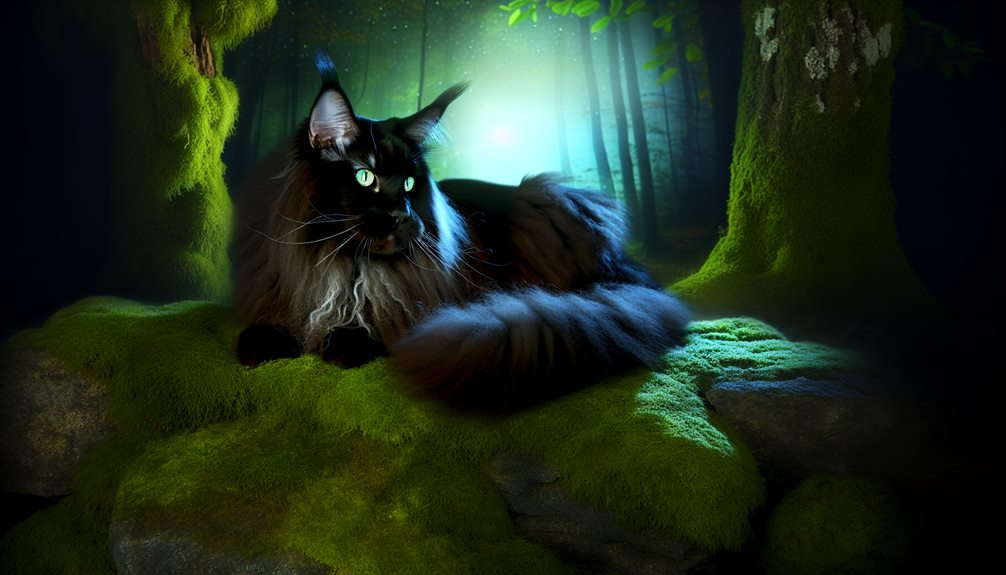Descubre el temperamento de los labradores retriever: guía completa
Cuando consideras llevar un Labrador Retriever a tu vida, entender su temperamento único es vital. Conocidos por su naturaleza amigable y entusiasta, los Labs pueden ser compañeros tanto juguetones como devotos. Podrías encontrar que su comportamiento sociable los hace muy populares entre las familias y otras mascotas. Sin embargo, hay más en su carácter de lo que parece: factores como la socialización y el entrenamiento juegan un papel importante en la formación de su comportamiento. Entonces, ¿qué exactamente deberías saber para garantizar que tu Lab prospere en tu hogar?

Rasgos de Personalidad Clave
Los Labrador Retrievers son conocidos por su naturaleza amigable y extrovertida, lo que los convierte en una de las razas de perros más queridas. Sus rasgos de personalidad clave contribuyen considerablemente a esta reputación.
Rápidamente notarás su espíritu juguetón; a los Labs les encanta divertirse y disfrutan participar en juegos, ya sea buscando una pelota o chapoteando en el agua. Este juego no solo los mantiene activos, sino que también fomenta un fuerte vínculo contigo.
Además, los Labs son compañeros increíblemente leales y devotos. Descubrirás que siempre están ansiosos por complacer, lo que hace que el entrenamiento sea una experiencia gratificante. Su inteligencia les permite aprender comandos rápidamente, y apreciarás su disposición para aprender.
Otro rasgo notable es su paciencia. Los Labs tienden a ser gentiles, especialmente con los niños y otras mascotas. Puedes sentirte seguro dejándolos interactuar con los miembros de la familia, sabiendo que serán cariñosos y protectores.
Por último, su naturaleza sociable significa que a menudo disfrutan conocer a nuevas personas y perros. Esta apertura puede llevar a interacciones encantadoras que enriquecen tu vida y la de ellos.
Socialización e Interacciones
La socialización es crucial para cualquier perro, y con los Labrador Retrievers, puede mejorar enormemente su ya amigable disposición. Estos adorables y sociables cachorros prosperan cuando son expuestos a diversos entornos, personas y otros animales desde una edad temprana. Al presentar a tu Labrador a diferentes experiencias, le ayudas a desarrollar confianza y una personalidad bien equilibrada.
A medida que participas en la socialización, presta atención al nivel de comodidad de tu perro. Algunos Labradores pueden ser más reservados en nuevas situaciones, mientras que otros pueden lanzarse de cabeza. Fomenta interacciones positivas recompensando el comportamiento tranquilo y proporcionando muchos elogios. De esta manera, tu perro aprende que las nuevas experiencias pueden ser agradables.
También es esencial exponer a tu Labrador a todo tipo de ruidos y actividades, desde parques bulliciosos hasta calles tranquilas. Esta diversidad les ayuda a volverse más adaptables y menos ansiosos a medida que se encuentran con nuevas situaciones a lo largo de sus vidas.
Recuerda, el objetivo es crear asociaciones positivas con diversos estímulos, convirtiendo a tu Labrador en un compañero bien educado y seguro de sí mismo.
En última instancia, la socialización no se trata solo de hacer amigos; se trata de construir una base sólida para la salud emocional de tu Labrador y asegurarte de que prospere en diferentes entornos.
Entrenamiento e Insights de Comportamiento
Entrenar a un Labrador Retriever puede ser una experiencia gratificante, ya que estos perros son conocidos por su inteligencia y disposición para complacer. Encontrarás que prosperan con el refuerzo positivo, por lo que usar golosinas y elogios será de gran ayuda para mantenerlos motivados.
Comienza con comandos básicos como “sentado”, “quieto” y “ven”. La consistencia es clave; practica estos comandos diariamente para obtener los mejores resultados.
Los Labradores son perros sociales y a menudo disfrutan de clases grupales donde pueden aprender junto a otros perros. Esto no solo ayuda con su entrenamiento, sino que también mejora sus habilidades sociales.
Recuerda, la paciencia es esencial. Si tu cachorro parece distraído o poco receptivo, da un paso atrás y mantén las sesiones de entrenamiento cortas y atractivas.
Observa el lenguaje corporal de tu perro mientras entrenas. Las señales de frustración o desinterés significan que es hora de un descanso. Incorporar tiempo de juego en el entrenamiento también puede mantener las cosas divertidas y ligeras.
Por último, no olvides desafiar mentalmente a tu Labrador. Los juguetes de rompecabezas y los juegos interactivos pueden complementar su entrenamiento, manteniendo su mente aguda y comprometida.
Aprende más sobre el temperamento de los labradores retriever
Los labradores retriever destacan por su carácter amigable, equilibrado y adaptable, lo que los convierte en compañeros ideales para familias y personas activas. Si quieres profundizar en todos los aspectos relacionados con su temperamento, te invitamos a visitar el artículo completo en Temperamento de los labradores retriever. ¡Te sorprenderá todo lo que puedes aprender!
